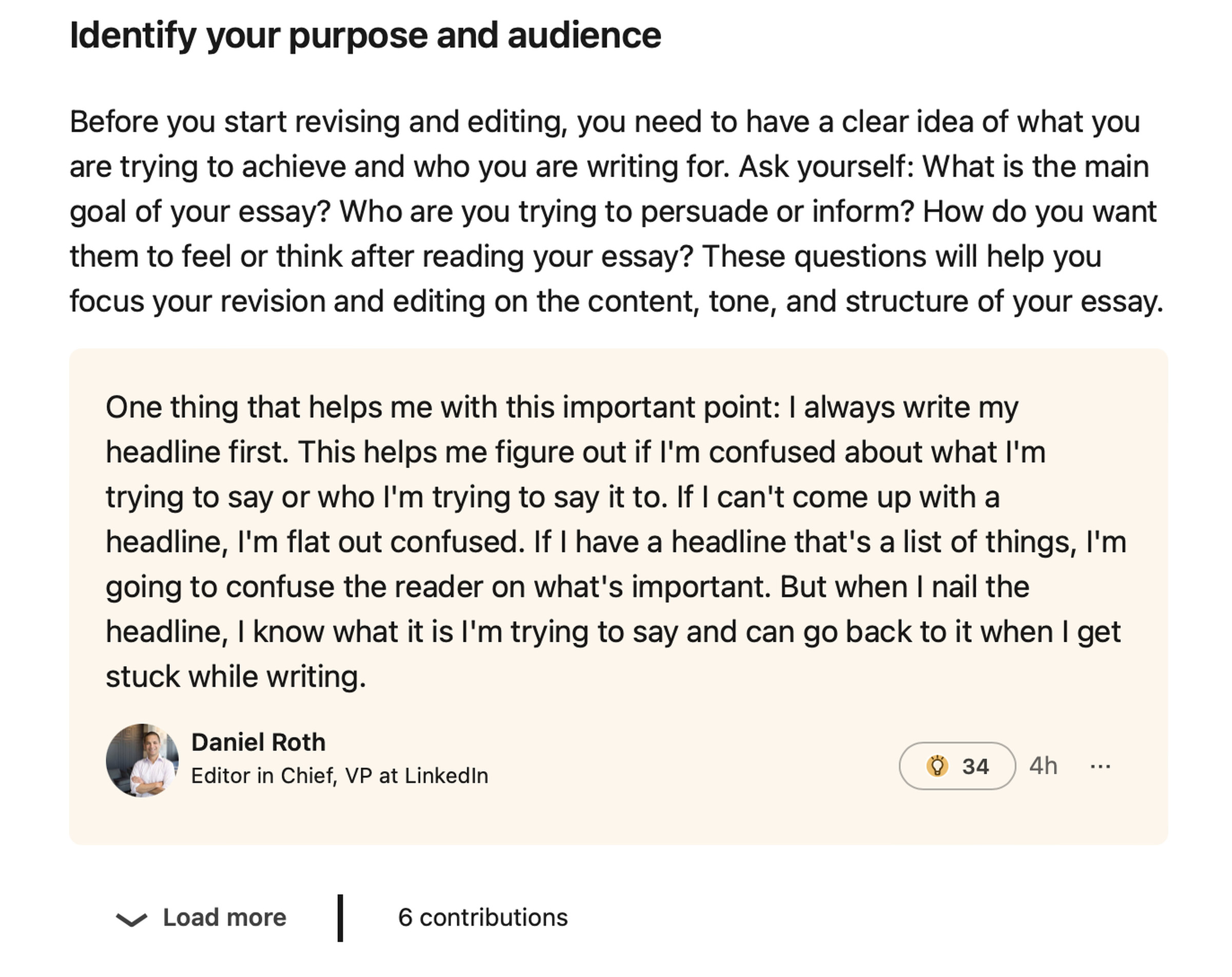The content will come from humans, but the ‘conversation starters’ are powered by computers.

LinkedIn has introduced a feature called collaborative articles, which uses “AI-powered conversation starters” to start discussions between “experts” that use the platform. In an announcement post on Friday, the company says it will “match each article with relevant member experts” based on its skills graph, and invite them to add context, extra information, and advice to the stories.
The company thinks the system will make it easier for people to contribute their perspectives because “starting a conversation is harder than joining one.” People can judge the experts’ contributions with an “insightful” reaction.


According to LinkedIn spokesperson Suzi Owens, “the bodies of the articles are powered by AI,” based on prompts “created by and constantly refined by” the company’s editorial team.
The company has already been using the tech to pump out almost 40 articles in the past two days, which is a pretty intense pace — personally, I don’t think I could come up with that many prompts in a week. They range in topics from things like how to show instead of tell when writing or overcome a creative block, to how to use feedback and semicolons.
According to an email sent to users provided to The Verge by social media consultant Matt Navarra, LinkedIn has chosen a “select group of experts” to contribute to the articles, saying that doing so could help boost their reputation and grow their following. The articles also end with a note telling readers that they can request access to contribute by “liking or reacting to this article.”
Perhaps unsurprisingly given AI’s reputation for getting it wrong sometimes, some of the AI-powered content has garnered mixed reactions from contributors. While some sections have received comments like “Excellent advice” or “Very logical starting point” that then go on to add context and other information, there have been more critical responses. “Not sure what’s being said here,” responds one, with another stating “I have a different opinion.” To be fair, you could probably find similar sentiments in the comments sections for plenty of human-written articles, too.
(I also found at least one example of someone promoting their book in a response, which is probably the most stereotypical LinkedIn behavior ever.)
It’s not exactly surprising that LinkedIn is using AI in at least some capacity. Its parent company, Microsoft, has been dumping billions into ChatGPT’s developer, OpenAI, and has been working to add the tech to many of its products. Plus, the collaborative articles idea fits with LinkedIn’s general push of becoming a place where professionals come to learn, not just show off or lead thoughts. The company also has its LinkedIn Learning division, which was created after the company purchased the e-learning site Lynda.com. What better way to supplement it than with an avalanche of crowd-sourced articles covering every topic an AI can think up?









